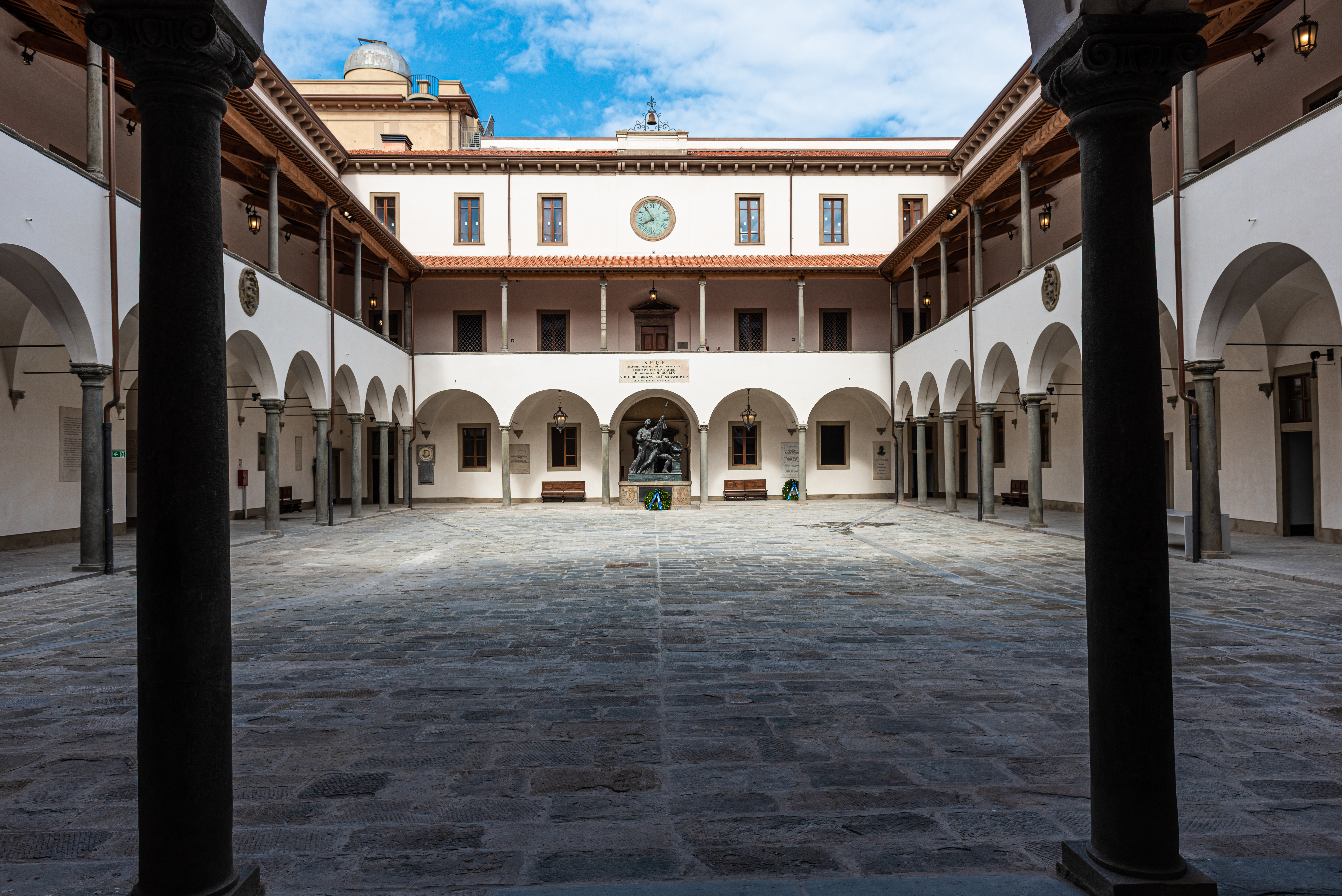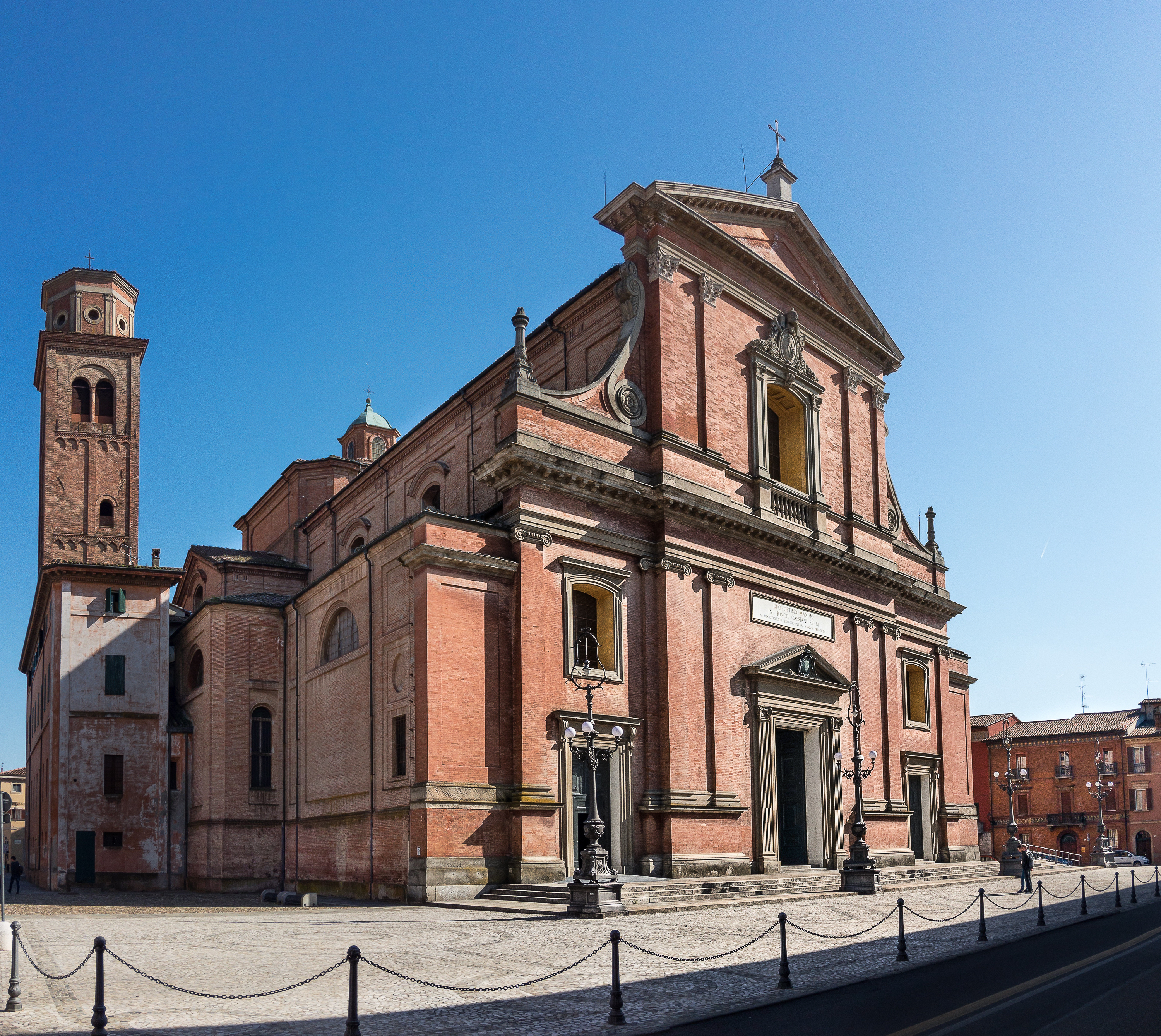|
Orto Botanico Di Pisa
The Orto botanico di Pisa, also known as the Orto Botanico dell'Università di Pisa, is a botanical garden operated by the University of Pisa, and located at via Luca Ghini 5, Pisa, Italy Italy ( it, Italia ), officially the Italian Republic, ) or the Republic of Italy, is a country in Southern Europe. It is located in the middle of the Mediterranean Sea, and its territory largely coincides with the homonymous geographical .... The garden was established in 1544 under Cosimo I de' Medici as the first university botanical garden in Europe, and entrusted to the famous botanist Luca Ghini of Imola. In 1563 the garden was relocated from its original riverside location (now the Medicean Arsenal) to one near the convent of Santa Marta, and in 1591 (under Joseph Goedenhuyze) again moved to its third and current location. From these early times, the garden has contained a gallery of natural objects (now Pisa's Museo di Storia Naturale), a library (now part of the university ... [...More Info...] [...Related Items...] OR: [Wikipedia] [Google] [Baidu] |
|
|
Botanical Garden
A botanical garden or botanic gardenThe terms ''botanic'' and ''botanical'' and ''garden'' or ''gardens'' are used more-or-less interchangeably, although the word ''botanic'' is generally reserved for the earlier, more traditional gardens, and is the more usual term in the United Kingdom. is a garden with a documented collection of living plants for the purpose of scientific research, conservation, display, and education. Typically plants are labelled with their botanical names. It may contain specialist plant collections such as cacti and other succulent plants, herb gardens, plants from particular parts of the world, and so on; there may be greenhouses, shadehouses, again with special collections such as tropical plants, alpine plants, or other exotic plants. Most are at least partly open to the public, and may offer guided tours, educational displays, art exhibitions, book rooms, open-air theatrical and musical performances, and other entertainment. Botanical garde ... [...More Info...] [...Related Items...] OR: [Wikipedia] [Google] [Baidu] |
|
 |
Pisa
Pisa ( , or ) is a city and ''comune'' in Tuscany, central Italy, straddling the Arno just before it empties into the Ligurian Sea. It is the capital city of the Province of Pisa. Although Pisa is known worldwide for its leaning tower, the city contains more than twenty other historic churches, several medieval palaces, and bridges across the Arno. Much of the city's architecture was financed from its history as one of the Italian maritime republics. The city is also home to the University of Pisa, which has a history going back to the 12th century, the Scuola Normale Superiore di Pisa, founded by Napoleon in 1810, and its offshoot, the Sant'Anna School of Advanced Studies.Scuola Superiore Sant'Anna di Pisa Information statistics History
|
|
Italy
Italy ( it, Italia ), officially the Italian Republic, ) or the Republic of Italy, is a country in Southern Europe. It is located in the middle of the Mediterranean Sea, and its territory largely coincides with the homonymous geographical region. Italy is also considered part of Western Europe, and shares land borders with France, Switzerland, Austria, Slovenia and the enclaved microstates of Vatican City and San Marino. It has a territorial exclave in Switzerland, Campione. Italy covers an area of , with a population of over 60 million. It is the third-most populous member state of the European Union, the sixth-most populous country in Europe, and the tenth-largest country in the continent by land area. Italy's capital and largest city is Rome. Italy was the native place of many civilizations such as the Italic peoples and the Etruscans, while due to its central geographic location in Southern Europe and the Mediterranean, the country has also historically b ... [...More Info...] [...Related Items...] OR: [Wikipedia] [Google] [Baidu] |
|
_07.jpg) |
Botanical Garden
A botanical garden or botanic gardenThe terms ''botanic'' and ''botanical'' and ''garden'' or ''gardens'' are used more-or-less interchangeably, although the word ''botanic'' is generally reserved for the earlier, more traditional gardens, and is the more usual term in the United Kingdom. is a garden with a documented collection of living plants for the purpose of scientific research, conservation, display, and education. Typically plants are labelled with their botanical names. It may contain specialist plant collections such as cacti and other succulent plants, herb gardens, plants from particular parts of the world, and so on; there may be greenhouses, shadehouses, again with special collections such as tropical plants, alpine plants, or other exotic plants. Most are at least partly open to the public, and may offer guided tours, educational displays, art exhibitions, book rooms, open-air theatrical and musical performances, and other entertainment. Botanical garde ... [...More Info...] [...Related Items...] OR: [Wikipedia] [Google] [Baidu] |
 |
University Of Pisa
The University of Pisa ( it, Università di Pisa, UniPi), officially founded in 1343, is one of the oldest universities in Europe. History The Origins The University of Pisa was officially founded in 1343, although various scholars place its origins in the 11th century. It is certain, however, that from the middle of the 12th century Pisa had a “Universitas” in the original sense of the word, that is, a group of students who gathered around masters. It was during this period that Leonardo Fibonacci was born and worked. He was one of the greatest mathematicians in history who, through his work, synthesized the spirit and processes of Greek geometry and the tools of Arabic mathematics for the first time in Europe. The papal seal “In Supremae dignitatis”, issued by Pope Clement VI on 3 September 1343, granted the Studium in Pisa the title of Studium Generale with various exclusive privileges, making it universally recognised. In medieval times, the Studium Generale ... [...More Info...] [...Related Items...] OR: [Wikipedia] [Google] [Baidu] |
.jpg) |
Cosimo I De' Medici, Grand Duke Of Tuscany
Cosimo I de' Medici (12 June 1519 – 21 April 1574) was the second Duke of Florence from 1537 until 1569, when he became the first Grand Duke of Tuscany, a title he held until his death. Life Rise to power Cosimo was born in Florence on 12 June 1519, the son of the famous condottiere Ludovico de' Medici (known as Giovanni delle Bande Nere) and his wife Maria Salviati, herself a granddaughter of Lorenzo the Magnificent. He was the grandson of Caterina Sforza, the Countess of Forlì and Lady of Imola. Cosimo came to power in 1537 at age 17, just after the 26-year-old Duke of Florence, Alessandro de' Medici, was assassinated. Cosimo was from a different branch of the Medici family, descended from Giovanni il Popolano, the great-grandson of Giovanni di Bicci de' Medici, founder of the Medici Bank. It was necessary to search for a successor outside of the "senior" branch of the Medici family descended from Cosimo di Giovanni de' Medici, since the only male child of Ales ... [...More Info...] [...Related Items...] OR: [Wikipedia] [Google] [Baidu] |
|
Luca Ghini
Luca Ghini ( Casalfiumanese, 1490 – Bologna, 4 May 1556) was an Italian physician and botanist, notable as the creator of the first recorded herbarium, as well as the first botanical garden in Europe. Biography Ghini was born in Casalfiumanese, son of a notary, and studied medicine at the University of Bologna. By 1527 he was lecturing there on medicinal plants, and eventually became a professor. He moved to Pisa in 1544, while maintaining his home in Bologna. He created the first herbarium (''hortus siccus'') in that year, drying plants while pressing them between pieces of paper, then gluing them to cardboard. None of his herbaria survive although the one by his student Gherardo Cibo made around 1532 survives. 1544 also saw the establishment of a garden for live plants, which became known as the Orto botanico di Pisa. Ghini published no significant botanical work of his own, but was noted as a teacher many of whose students went on to significant careers, including Cesalp ... [...More Info...] [...Related Items...] OR: [Wikipedia] [Google] [Baidu] |
|
 |
Imola
Imola (; rgn, Jômla or ) is a city and ''comune'' in the Metropolitan City of Bologna, located on the river Santerno, in the Emilia-Romagna region of northern Italy. The city is traditionally considered the western entrance to the historical region Romagna. The city is best-known as the home of the Autodromo Enzo e Dino Ferrari which hosts the Formula One Emilia Romagna Grand Prix and formerly hosted the San Marino Grand Prix (the race was named after the independent nation of San Marino which is around 100 km to the south), and the deaths of Formula One drivers Ayrton Senna and Roland Ratzenberger at the circuit during the 1994 San Marino Grand Prix. The death of Senna (three-times world champion) was an event that shocked the sporting world and led to heightened Formula One safety standards. History The city was anciently called ''Forum Cornelii'', after the Roman dictator L. Cornelius Sulla, who founded it about 82 BC. The city was an agricultural and trading centre, f ... [...More Info...] [...Related Items...] OR: [Wikipedia] [Google] [Baidu] |
|
Joseph Goedenhuyze
Joseph Goedenhuyze or Goedenhuize (died late 1595) was a Flemish botanist and naturalist, active in the court of the Grand Duchy of Tuscany. He was also known by the Italian name Giuseppe Casabona or more rarely Giuseppe Benincasa Life He was born in Flanders, probably in the mid 16th century, but soon moved to Florence, probably as a teenager. His parentage and education are unknown but the latter does not seem to have extended much beyond that of a herbalist. Probably around 1570 he entered Niccolò Gaddi's service - Gaddi had built a major botanical garden in the grounds of his palazzo, to which Goedenhuyze brought back plants from Livorno, Monte Pisano and Barga. In 1578 or possibly earlier, Gaddi's influence at court gained Goedenhuyze a role in the court of Francesco I, as one of the gardeners in his Giardino Delle Stalle and Giardino dei Semplici and the garden at his casino di San Marco. He travelled widely to bring back new plants for the gardens, sending letters back t ... [...More Info...] [...Related Items...] OR: [Wikipedia] [Google] [Baidu] |
|
 |
Arboreta
An arboretum (plural: arboreta) in a general sense is a botanical collection composed exclusively of trees of a variety of species. Originally mostly created as a section in a larger garden or park for specimens of mostly non-local species, many modern arboreta are in botanical gardens as living collections of woody plants and is intended at least in part for scientific study. In Latin, an ''arboretum'' is a place planted with trees, not necessarily in this specific sense, and "arboretum" as an English word is first recorded used by John Claudius Loudon in 1833 in '' The Gardener's Magazine'', but the concept was already long-established by then. An arboretum specializing in growing conifers is known as a pinetum. Other specialist arboreta include saliceta (willows), populeta ( poplar), and querceta (oaks). Related collections include a fruticetum, from the Latin ''frutex'', meaning ''shrub'', much more often a shrubbery, and a viticetum (from the Latin ''vitis,'' meaning vine ... [...More Info...] [...Related Items...] OR: [Wikipedia] [Google] [Baidu] |
 |
List Of Botanical Gardens In Italy
This list of botanical gardens in Italy is intended to include all significant botanical gardens and arboretums in Italy. * Abruzzo ** Alpine Botanical Garden of Campo Imperatore (Giardino Botanico Alpino di Campo Imperatore) ** Giardino Botanico Daniela Brescia ** Giardino Botanico della Majella ** Giardino Botanico e Arboreto Appenninico del Parco Nazionale d'Abruzzo ** Giardino Botanico Gole del Sagittario ** Giardino Botanico "Loreto Grande" ** Giardino Botanico Mediterraneo ** Giardino Botanico Michele Tenore, Colle Madonna ** Giardino dei Semplici, Chieti ** Orto Botanico dell'Università dell'Aquila ** Orto Botanico di Collemaggio ** Orto Botanico Riserva Lago di Penne ** Botanical Garden at the Sorgenti del Cavuto * Apulia ** Orto Botanico dell'Università di Bari, at Via Orabona, Bari ** Orto Botanico dell'Università di Lecce, at Via Provinciale Lecce-Monteroni, Lecce * Calabria ** Giardino Botanico Santicelli, at Soverato ** Orto Botanico dell'Università ... [...More Info...] [...Related Items...] OR: [Wikipedia] [Google] [Baidu] |
 |
1544 Establishments In Italy
__NOTOC__ Events January–June * January 13 – At Västerås, the estates of Sweden swear loyalty to King Gustav Vasa and to his heirs, ending the traditional electoral monarchy in Sweden. Gustav subsequently signs an alliance with the Kingdom of France. * February 20 – The Fourth Diet of Speyer is convened. * April 11 – Battle of Ceresole: French forces under the Comte d'Enghien defeat forces of the Holy Roman Empire, under the Marques Del Vasto, near Turin. * May – Charles V, Holy Roman Emperor, again invades eastern France. * May 3 – Edward Seymour, Earl of Hertford, with an English army, captures Leith and Edinburgh from the Kingdom of Scotland. * June 19– August 18 – Troops of the Holy Roman Empire besiege Saint-Dizier, in eastern France. July–December * July – Battle of the Shirts: The Clan Fraser of Lovat and Macdonalds of Clan Ranald fight over a disputed chiefship in Scotland; repo ... [...More Info...] [...Related Items...] OR: [Wikipedia] [Google] [Baidu] |